Search
Search Results
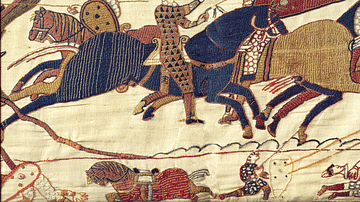
Definition
Odo of Bayeux
Odo of Bayeux (d. 1097 CE) was the bishop of Bayeux in Normandy and half-brother of William the Conqueror (r. 1066-1087 CE). After the Norman conquest of England in 1066 CE, Odo was given vast Anglo-Saxon estates and made, as the Earl of...
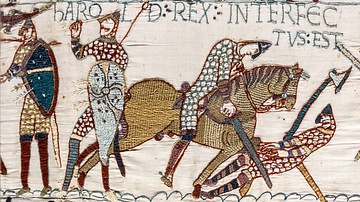
Definition
Bayeux Tapestry
The Bayeux Tapestry shows in pictures the events leading up to the Norman conquest of England by William the Conqueror, Duke of Normandy, and his 1066 defeat of King Harold Godwinson at the Battle of Hastings. It was produced between 1067...
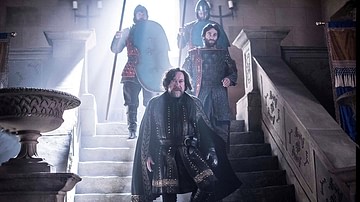
Definition
Odo of West Francia
Odo of West Francia (also known as Eudes, l. c. 856-898 CE, r. 888-898 CE) was Count of Paris and hero of the Viking Siege of Paris 885-886 CE who was shortly afterwards elected King of West Francia. He was the son of Robert The Strong (c.830-866...
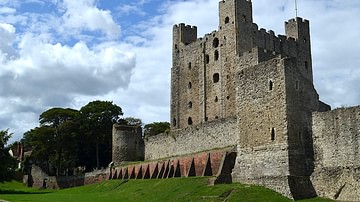
Definition
Rochester Castle
Rochester Castle, located in Kent, England, was first constructed shortly after 1066 CE by the Normans, was converted into stone between 1087 and 1089 CE, and then added to over subsequent centuries, notably between 1127 and 1136 CE, and...

Definition
William II of England
William II of England, sometimes called William 'Rufus' for his red hair and complexion, reigned as the king of England from 1087 to 1100 CE. The son of William the Conqueror (r. 1066-1087 CE), the younger William was loyal to his father...
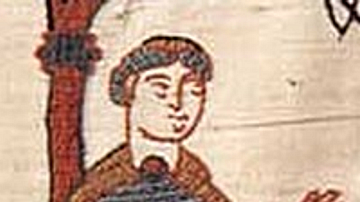
Image
Bishop Odo, Bayeux Tapestry
A detail of the 11th century CE Bayeux Tapestry showing Bishop Odo of Bayeux, likely the patron of the artwork. (Centre Guillaume le Conquérant, Bayeux, France)
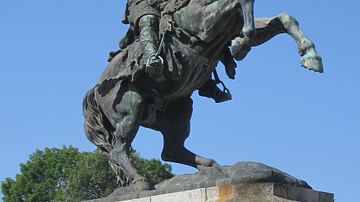
Definition
William the Conqueror
William the Conqueror (c. 1027-1087), also known as William, Duke of Normandy, led the Norman Conquest of England in 1066 when he defeated and killed his rival Harold Godwinson at the Battle of Hastings. Crowned King William I of England...

Image
Bayeux Tapestry: Detail from Battle of Hastings
This detail from Bayeux Tapestry depicts Bishop Odo of Bayeux, half-brother of William the Conqueror, rallying the troops at the Battle of Hastings. The tapestry is believed to date to the eleventh century CE. As can be seen, the artifact...
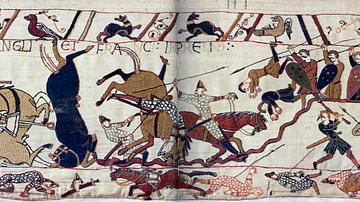
Definition
Norman Conquest of England
The Norman Conquest of England (1066-71) was led by William the Conqueror who defeated King Harold II at the Battle of Hastings in 1066. The Anglo-Saxon elite lost power as William redistributed land to his fellow Normans. Crowned William...
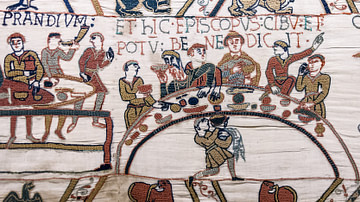
Image
Feast of William the Conqueror
A scene from the 11th century CE Bayeux Tapestry showing the celebratory feast of William the Conqueror after the Battle of Hastings in 1066 CE. In the centre is Odo, Bishop of Bayeux and probable patron of the tapestry. (Centre Guillaume...